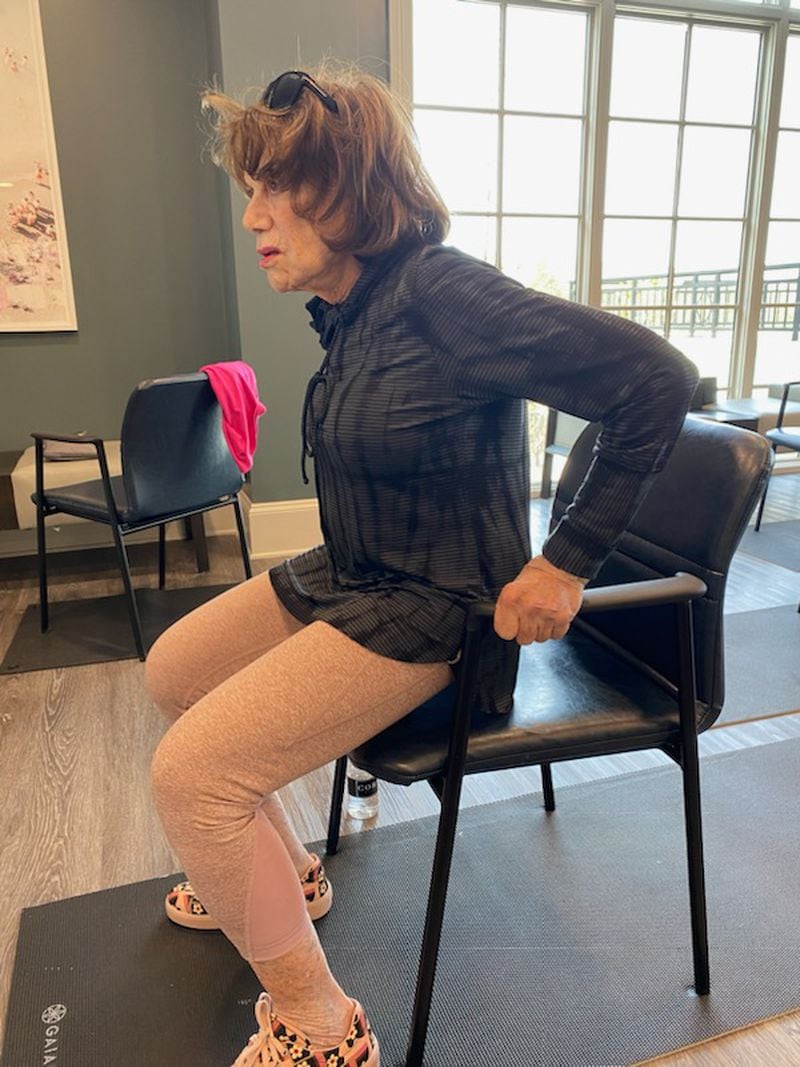As women enter their 50s and beyond, strength training becomes increasingly vital for overall health and well-being.
It can help lessen age-related muscle loss, maintain bone density, and combat issues like heart disease, cholesterol problems, cancer and immune health.
The American College of Sports Medicine recommends strength training at least twice a week targeting all the major muscle groups, including the chest, back, arms, shoulders, abs and legs. For each type of exercise, aim for three sets of 10-15 repetitions.
Following are eight strength training exercises recommended for women over 50. As with any exercise program, be sure to consult your doctor before beginning.
Squats or sit-and-stands
Stand with feet shoulder width apart or wider. Without your knees going past your toes, lower your buttocks toward the floor as if sitting in a chair. For a greater challenge, grasp weights while squatting. Squats work the glutes and large leg muscles, and help with balance.
A variation on this exercise is to use an actual chair or bench, said Bradford Bailey, owner of SeniorFit Atlanta, which works primarily with individuals in their 80s and older. For a sit-and-stand, start with your feet wide apart and then simply lower yourself until the buttocks just touches the chair, then stand back up.
“It forces correct form,” Bailey said. “Squats are good, but very few people do squats correctly.”
Credit: Marcia Bosseler
Credit: Marcia Bosseler
Deadlifts
Stand in front of a weight on the floor or another low position, grasp the weight and stand up while holding it. This exercise requires detailed attention to proper form and is best done with the assistance of a trainer. It targets various muscles in the legs, lower back and core while also strengthening grip.
Sally White, a wellness coach at Carl E. Sanders YMCA in Buckhead, said this movement works wonders for developing muscle groups critical for walking. White, who is in her 70s, is a personal trainer for many older adults. She encourages her clients to work toward “functional strength,” which allows them to execute daily tasks with greater ease and independence.
Pushups
With modifications, even a beginner can do this classic exercise. To start, stand in front of a wall, countertop, chair or any steady surface. More advanced exercisers can begin on the floor, either from their knees or their toes. Place palms on the object or floor, lower your body and push back up again. Be sure to keep your hips level with the rest of your body.
Planks
The plank is the top of a pushup. White recommends beginning by holding the position for 15 seconds then working up to several sets of 30-second holds.
Sit-ups
Sit ups can be done from the floor or with modifications. To work from a chair, sit toward the front of the seat with your feet on the floor and hands across your chest. Next, raise and lower your torso, keeping your back straight and taking care not to strain your neck.
Shoulder/overhead presses
This exercise targets the entire shoulder region and the triceps, strengthening the muscle groups responsible for pushing, pulling, reaching and rotating, Bailey said. To begin, grasp a medicine ball or hand weight and press upward, duplicating the motion of placing something up on a high shelf.
Rowing
Rowing exercises target the muscles in the upper back, biceps and shoulders. They can be done with a latex band for resistance or from a gym machine.
Jumping jacks
Jumping jacks, or a modification where you step to either side or do a squat jump, can greatly benefit bone density, White said, in addition to being just plain fun. Be sure to do this exercise on a surface that absorbs impact.
But the hardest — and most effective — exercise of all may be turning the doorknob to get out of the house and to the gym, she added.
“Motivation is not the key,” she said. “The key is discipline.”
About the Author






